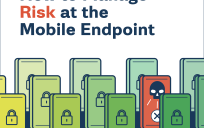![]()
In rural communities, fire departments do not have a lot of money for equipment or personnel, so they rely on volunteers who often use their own devices to conduct their work. In order for these fire departments to adopt a broadband network like FirstNet, it will need to provide a cost-effective product, good coverage in rural jurisdictions, and a well-managed “bring your own device” (BYOD) plan. One of FirstNet’s objectives is to provide a device ecosystem that will allow for BYOD.
According to the Operational Architecture section of the request for proposal (RFP), a management tool will be provided by the partner for device configuration and user provisioning. It will be a certified tool for all mobile device management. This means enterprise applications, application platform, back-end services and email still need to be managed for the overall Mobility Management portfolio. If the agency is using commercial carriers today, some of this plan may already be established. Either way, it gives the agency a chance to review the portfolio.
There is a wide array of applications available for mobile devices, and FirstNet will open the doors for more innovation geared toward public safety applications. This is a good time to look at the applications used in the field and make an enterprise plan for BYOD. The plan should include a suite of applications that are well integrated and complementary to agency policies, as well. Policies should be adjusted for industry best practices where possible.
So how do you integrate FirstNet using volunteers with a small department budget? In addition to providing the basic requirements for configuration and provisioning, the partner (RFP awardee) could also provide device tracking and software updates in their ecosystem. That would leave interfaces to the back-end database, or records management, which would need to be mapped out. The interfaces often get overlooked, because there are too many parts coming together. It will easily create a lot of extra work if it is not executed properly. When deciding on your applications, ask the vendor if they have an existing relationship with your records management provider. Also, ask other agencies about the process they used to execute the interface successfully.
On the more robust BYOD plan, Enterprise Applications should be functional on the most popular platforms (i.e. iOS, Android, and Windows). BYOD users can select their device based on their personal needs without compromising interoperability for their volunteer work.
Nothing will change with commercial networks that are used today. That should give agencies the chance to migrate to FirstNet using their existing device management schedule, while they iron out the policy standards and acquire devices with the needed band class 14 chip sets.
Melinda Miller is part of the GovLoop Featured Blogger program, where we feature blog posts by government voices from all across the country (and world!). To see more Featured Blogger posts, click here.





Great read! Thanks for sharing!